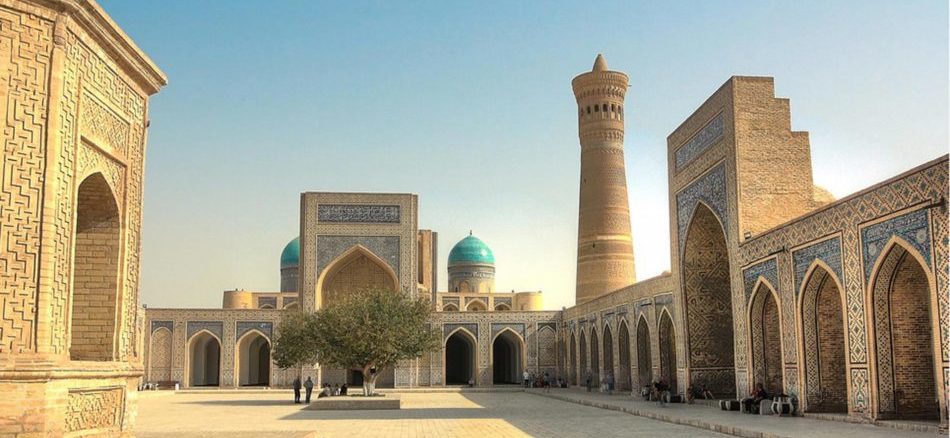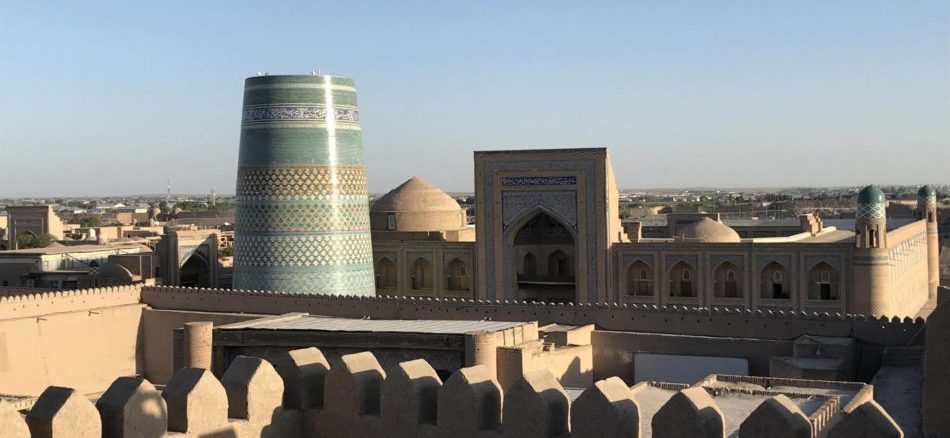Amir Temur – Temerlane

Timur (9 April 1336 – 18 February 1405), historically known as Amir Timur and Tamerlane (Persian: تيمور لنگ Temūr (-i) Lang, “Timur the Lame”), was a Turkish-Mongolian conqueror born in Kesh who later became Shakhrisabz ( 90 km from Samarkand). As founder of the Timurid empire in Persia and Central Asia, he became the first ruler of the Timurid dynasty.
Born in the Barlas clan in Transoxiana or Mawaraunnahr (in present-day Uzbekistan) on April 9, 1336, Timur gained control of the Western Chagatai Khanate in 1370. From that base, he led military campaigns across western, southern and central Asia, the Caucasus and the South Russia, and emerged as the most powerful ruler of the Muslim world after defeating the Mamluks of Egypt and Syria, the emerging Ottoman Empire and the fallen Sultanate of Delhi. From these conquests he founded the Timurid empire, but this empire fragmented shortly after his death.
Timur was the last of the great nomadic conquerors of the Eurasian steppe, and his empire laid the foundation for the rise of the most structured and enduring gunpowder empires in the 16th and 17th centuries.
Timur’s full name was Timur ibn Taragay Barlas – Timur is the son of Taragai of Barlas, according to the Arabic tradition (alam-nasab-nisba). Temur or Temir in the Turkish languages means “iron”.
Not being Chingizid, Timur formally could not bear the title of the khan, so he was always called only Emir (leader, leader). However, after getting married in 1370 to the Saroy Mulk Khonim (whose name bears the Bibikhanum mosque in Samarkand) of the Chingizid home, he took the name of Timur Gurgan [9] (Tāmūr Gurkānī, Gurkān is a version of the Kurgan or Mongolian heurgen , “son in law”). This meant that Timur was a relative of Chingizids and was free to live and act in their homes.
Personality of Temur
Timur was a very brave and sober man. With the judgments of sobriety, he was able to make the right decision in difficult situations. These traits of his character attracted people to him.
A visionary ruler and talented organizer. Timur left dozens of monumental architectural structures, some of which have entered the treasury of world culture. Timur’s buildings, in whose creation he took an active part, reveal in him an extraordinary artistic taste.
CONQUESTS
From historical sources it is known that the centralized state of Sahibkiran Amir Temur Taragay Bakhodir included twenty-seven states: Kherasan, India, Iran, Ajam Iraq, force Iraq, Turkey, Azerbaijan, Gurzhistan, Golden Horde (Kipchak, Crimea) and other centralized states, belonging to different religions and nationalities
| NAMES OF STATES CENTRALIZED IN THE AGE OF AMIR TEMUR | CURRENT NAMES OF STATES CENTRALIZED BY AMIR TEMUR |
| 1.Irak 2.Gilan 3.Jurjan 4.Mazandaran 5.Azerbaijan 6.Persia 7.Eranistan 8.Belujistan 9.Seistan 10.Kabulistan 11.Shirvan 12.Sultania 13.Ray 14.Gurdjistan – part of Irak 15.Laristan – part of Irak 16. Khuzestan 17. Armanistan 18.Orda d’Oro 19. Kashmir 20. Multan 21. Mulkishadman 22. Afghanistan Kabulistan 23.India 24. Impero dei Niched – le isole del Mediterraneo 25. Costantinopoli, Bisanzio-Roma 26.Turkia 27. Lesbo – le isole indipendenti 28. Chios – le isole indipendenti 29.Genova 30.Rodos 31. Galazia 32. Tracia 33. Paflogoniya 34.Smirno 35.Palestina 36.Khorasan 37.Mowaraunnakhr 38.Mogolistan | 1. Uzbekistan 2. Tadjikistan 3. Kazakhistan 4. Kirgizistan 5. Turkmenia 6. Azerbaijan 7. Armenia 8. Giorgia 9. Dagestan 10. Mongolia 11. Cina Occidentale 12. Nepal 13. India 14. Pakistan 15. Afganistan 16. Iran 17. Kurdistan 18. Siria 19. Israele 20. Giordania 21. Egitto 22. Arabia Saudita 23. Irak 24. Kuwait 25. Oman 26. Yemen 27. Turchia |
Appearance

The autopsy of the tomb of Gur Emir (Samarkand) by M.M. Gerasimov and the subsequent study of the skeleton of the burial, which is believed to belong to Tamerlan, showed that its height was 172 cm. Timur was strong, physically developed, his contemporaries wrote about him: “If most soldiers could pull the bowstring to the level of the collarbone, then Timur would bring it to the ear.”
The Emir’s strong athletic muscles most likely differed in some kind of dryness, which is quite natural: life in the military campaigns, with their difficulties, almost constant stay in the saddle could hardly contribute to obesity.
M. Gerasimov in his work notes the following: “Even a preliminary study of beard hair under binoculars convinces us that this reddish-red color is natural, not henna-colored, as historians have described”. Timur wore a long mustache, uncut on his lips. As it turned out, there was a rule that allowed the highest military class to wear a mustache without cutting it on the lip, and Timur, according to this rule, had not cut his mustache, and they hung it freely on his lip.
The Spanish diplomat and traveler Rui González de Clavijo, who visited Tamerlane’s court in Maverannahr, reports that “Mr. Temur” conquered all the territories of India Minor and Khorasan. Samarkand and Khorasan are divided by the river (Amu Darya).
Timur enjoyed talking to scientists, especially listening to historical writings being read; with his knowledge of history, he surprised the medieval historian, philosopher and thinker Ibn Khaldun; Timur used stories about the prowess of historical and legendary heroes to inspire his warriors.
During his reign, which lasted 35 years, Amir Temur was able to create a gigantic empire, which stretched from the Ganges and the Indus to Zarafshan and Syrdarya, from the Bosphorus to Tien Shan. In the cities, the active construction of madrasas, mosques, baths, caravanserais and mausoleums began.
Today, after centuries of Amir Temur, it is safe to put them on a par with these legendary conquerors such as Julius Caesar, Darius I and Alexander the Great.






